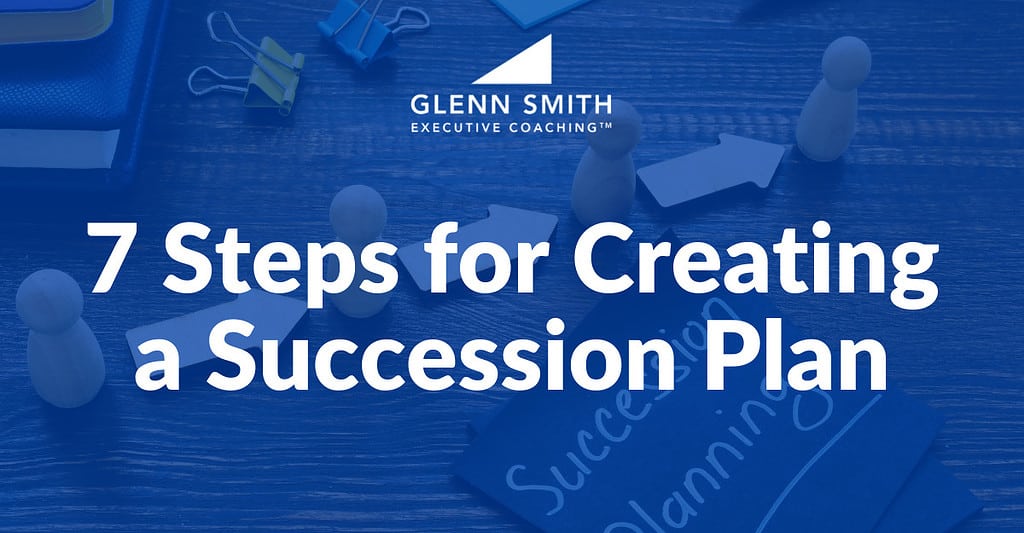Why Your Business Needs a Succession Plan

Every business owner and general manager should be developing their succession plan, not just for themselves but for the other roles that are also critical for the success of the business.
In a nutshell, succession planning is a strategy for identifying and developing future leaders at your company.
It involves preparing employees for future roles, but it is NOT pre-selection. We should monitor the growth and development of our people before making any promises.
Identify & Develop Strengths
A wise owner or manager will assess their best employees’ strengths and aptitudes. I like to use the Clifton Strengths 34 (formerly known as the Clifton Strengths Finder) created by the Gallup Organization. This assessment gives me a picture of a team member’s innate strengths and talents. It helps me know where they have the aptitude for growth and contribution. I consider this the foundation of any internal leadership development program. I can’t stress enough the importance of having an intentional plan for developing your people. You can’t wait until you need a leader to start developing one. And you can’t wait until you need to exit your business to start creating a succession plan.
The Benefits of Having a Succession Plan
There are many benefits to creating succession plans. First, succession planning helps your business prepare for contingencies by preparing high-potential workers for advancement. It provides a way to identify key roles, people with the right skills, and positions that may need filling quickly. Second, training and developing your future leaders is critical for scalability. You cannot sustain growth without leadership beyond yourself.
Plus, if you hope to sell your business one day, having a strong leadership bench adds tremendously to the asset value of your business. Finally, succession planning cuts the cost of recruitment, enabling companies to manage recruitment in-house. Companies with strong leadership pipelines can hire at the lowest levels (e.g., entry levels), where there are typically more candidates and less expense. Plus, having a pipeline or career path for new hires helps make your company a desirable place to work.
7 Steps for Creating Your Succession Plan
Succession planning does not have to be an intimidating or overwhelming process, but it does take some time for forethought and planning. Here are seven easy steps to help you get started.
Identify Roles and Gaps
1. Identify the critical roles.
Identify the critical roles that make sense for succession planning and begin thinking about potential candidates. Start by thinking about your top 2 or 3 most critical roles. Who do you have in the wings that might be able to step up and fill those roles one day? If you find no one in your current staff, this should become an important consideration for future hires!
2. Identify skill gaps and training.
Identify skill gaps and training needs of the individuals being considered for future roles. Once you identify the gaps, you can begin planning some training opportunities to experiment with.

Develop Your Leaders
3. Structure to create opportunities for advancement.
This is often hard for a small business owner to visualize because most small businesses have a very flat organizational structure. However, through brainstorming, I have been able to help my clients come up with new roles, certifications, specialties, and titles that give the employees a sense of advancement and growth.

4. Design a simple Leadership Development Program.
Again, keep it simple. Maybe start with a book or two or maybe an online course. There are numerous online resources available today, most of which are either free or reasonably priced.
Make a list of training opportunities and get people started. You don’t have to have your program fully built out to start. Just start with something affordable, accessible, and easy to manage.
5. Focus on the Developmental Gaps that need to be addressed. Sometimes this is time management, priority setting, daily organization, goal setting, or courses specific to your industry. Maybe it is training around your technology (e.g. CRM, QuickBooks, Project Management, etc.)
Test your Succession Plan
6. Conduct experiments or a “trial run” of your succession plan.
Test your leaders with temporary but real responsibility. Test your training effectiveness and keep improving it. One restaurant I know of trains its future managers by having trainees fill a management role for a month once or twice a year to see how they perform and to identify training gaps that may have been overlooked.
7. Finally, don’t wait to start the process
Get started and have your trainees document the training or procedures for future trainees. Document as you go, or as Robert Quinn once stated, “Build the bridge as you walk on it.”


